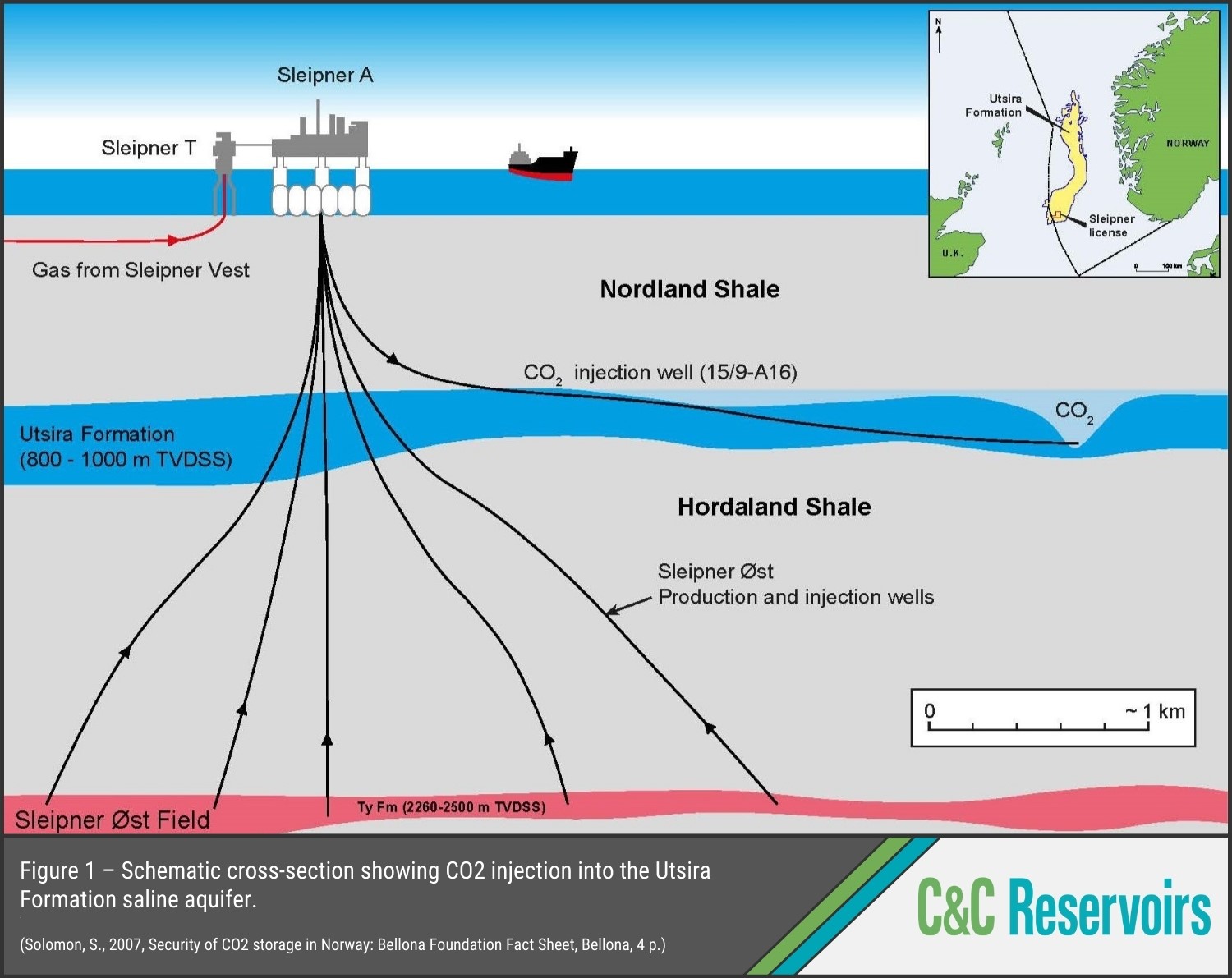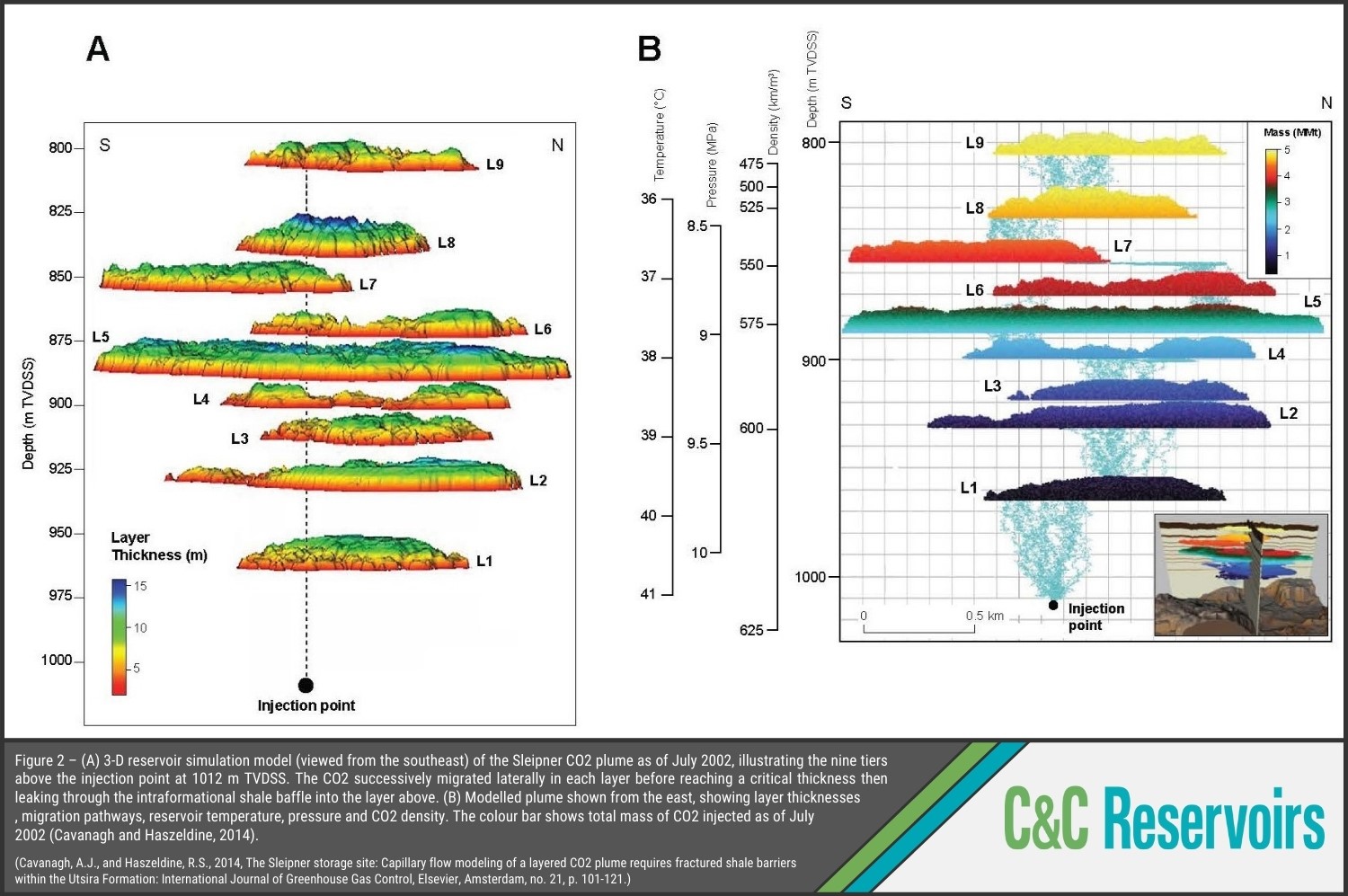The Sleipner CCS Project
The Sleipner CCS Project
Analogue Spotlight
The Sleipner CCS Project in the Norwegian North Sea began in 1996. Since then, more than 23 million tonnes of CO2 have been injected through a single extended-reach well, and permanently stored in the Utsira Sand saline aquifer (Fig. 1).
The project’s success revealed many important lessons, including:
-
The plume migrated along sand layers then through successive intraformational shales to form a nine-tiered plume (Fig. 2A) that had reached the main top seal before the first repeat 3-D seismic survey was shot in 1999. This provided valuable insight into the effect of gas chimneys and microfractures on vertical migration of CO2 through shales.
-
4-D time-lapse seismic was critical in monitoring the plume’s growth and clearly showed the multi-layered plume development over time.
-
CO2 forms a dense, supercritical fluid with gas-like behaviour under the conditions at Sleipner. Its pressure, temperature and density vary across the plume, which has led to uncertainties regarding storage capacity (Fig. 2B).
- The majority of CO2 is trapped by buoyancy, although other mechanisms have been modeled and are expected to become more important. Residual trapping is likely to account for >30% storage after 20 years; solubility trapping may become more important at 100 years; and 22% trapping by mineralisation is predicted to occur 10,000 years after injection ceases.


